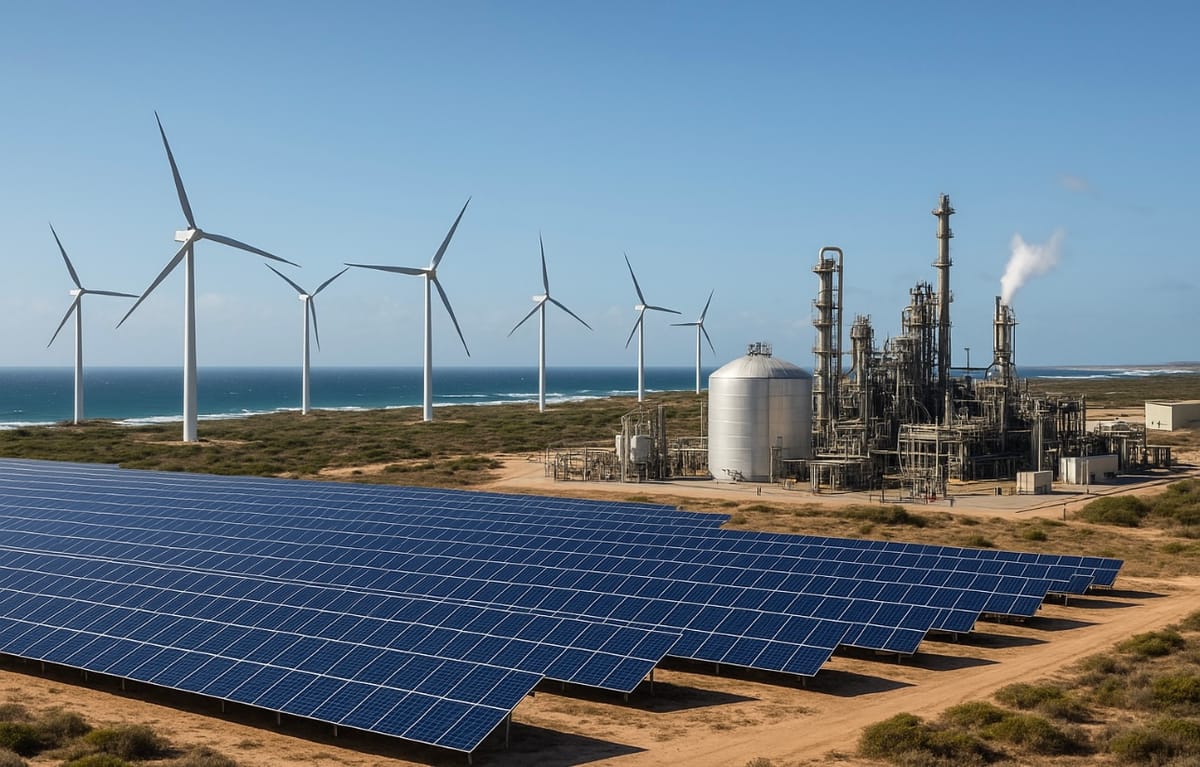South Africa’s Hive Project: The World’s Cheapest Green Ammonia for Global Export
Hive Project in South Africa produces low-cost green ammonia with renewable energy, set for export to Europe and Asia by 2029.

South Africa is stepping into a new era of clean energy through its ambitious Hive project. Located in Coega, Eastern Cape, this initiative is backed by a US$5.8 billion investment to produce low-cost green ammonia, powered entirely by renewable energy. The product is targeted for export to Europe and Asia, positioning South Africa as a major player in the global green ammonia market.
Background of the Hive Green Ammonia Project
The Hive Green Ammonia Project is a joint venture between UK-based Hive Energy and South African firm BuiltAfrica. They are building the production facility in the strategically located Coega Special Economic Zone. The project aims for an initial output of about 1.2 million tons of green ammonia per year, making it one of the largest facilities in Africa.
This move aligns with the South African government’s roadmap for a green energy transition, supported by robust regulations and official backing, including its designation as a Strategic Integrated Project. The project has already secured environmental approvals and is now entering the final investment decision (FID) phase, scheduled for the second half of 2026.
Renewable Energy and Innovative Technology
Hive leverages a mix of solar and wind power, with 1,430 MW of solar PV and 1,880 MW of wind energy capacity. This renewable power will operate electrolyzers with a 1,120 MW capacity, converting desalinated water into green hydrogen, which is then transformed into ammonia via an environmentally friendly Haber-Bosch process.
The facility also features an air separation unit, seawater desalination plant, and a distribution pipeline network to the export harbor. Supporting infrastructure includes substations, ammonia storage facilities, and distribution channels to ensure smooth production and shipping.
Export Markets and International Partnerships
Hive’s green ammonia has already attracted interest from countries like Japan, South Korea, and various European nations. Japanese companies such as Itochu have signed MoUs for offtake agreements. This cements South Africa’s role as a key supplier of clean fuels for the future.
Genesis Eco-Energy is also a crucial partner, contributing hundreds of megawatts in wind farm capacity to the renewable energy supply. This ensures that the project’s supply chain is fully integrated and low-carbon.
Economic, Environmental, and Social Impact
The Hive project is expected to create more than 20,000 direct and indirect jobs across the Eastern and Western Cape. In addition to strengthening the national energy system, it supports South Africa’s Just Energy Transition Partnership (JETP) aimed at decarbonizing the industrial and power sectors.
Using green ammonia has huge potential to replace fossil fuels, such as diesel in transportation and power generation. Green ammonia offers a sustainable marine fuel alternative, helping South Africa meet its emissions reduction goals.
Global Prospects and Long-Term Commitment
With a target to offer the world’s cheapest green ammonia before 2030, Hive is set to compete with major projects in Mauritania and elsewhere. South Africa is now on track to become a strategic supplier of green hydrogen and ammonia for global markets.
The project is scheduled to begin commercial operations by late 2029, following completion of all investment, construction, and testing phases. Hive represents a milestone in South Africa’s journey toward energy, economic, and environmental transformation for a greener future.





Comments ()